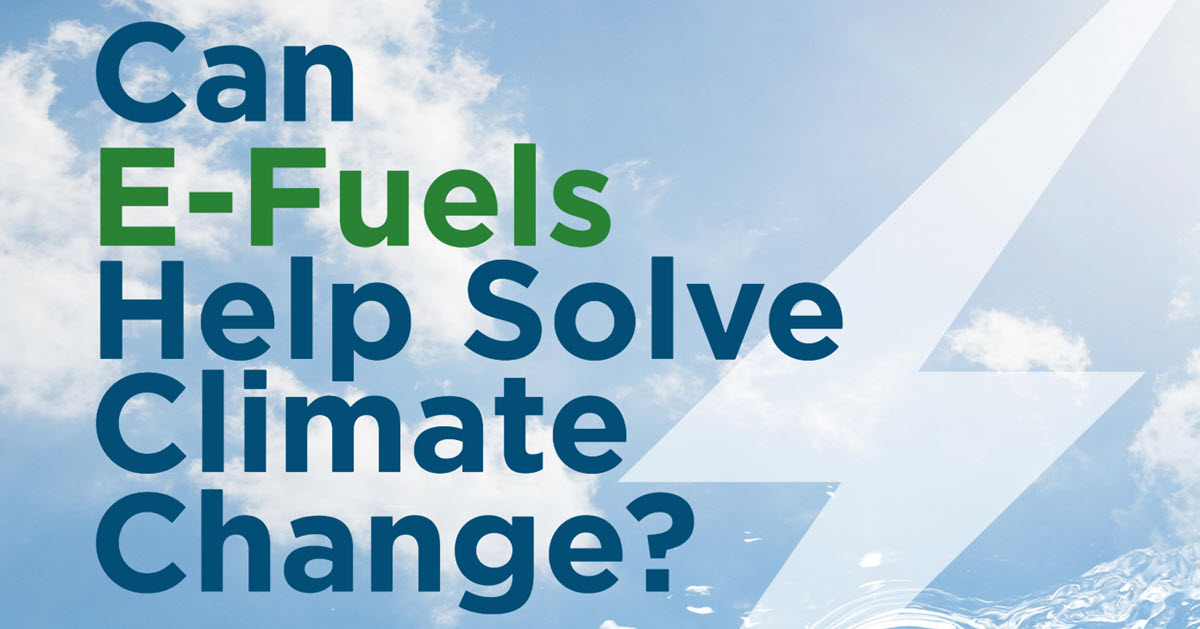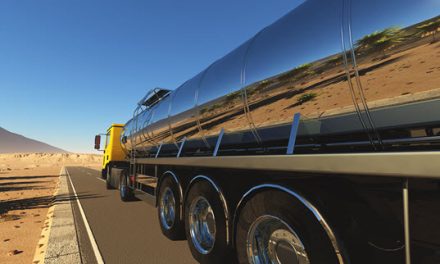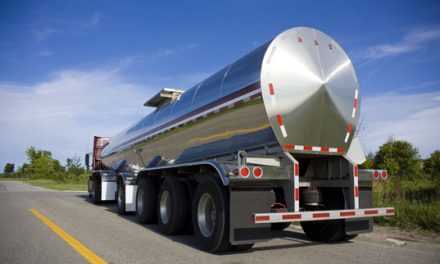With innovation and support, electric fuels could one day be a carbon-neutral alternative to fossil fuels.
Dr. Raj Shah, Muqsit Khan, Blerim Gashi, Dr. Vikram Mittal
Electric fuel is a possible option for green fuel production. Electric fuel (e-fuel) is produced from hydrogen and carbon dioxide through electricity that is derived from renewable energy sources. The primary method involves producing hydrogen and combining it with carbon dioxide to produce fuels like gasoline, diesel and kerosene.
The gaseous or liquid fuels produced are carbon-neutral, meaning there are no net greenhouse emissions according to the EFuel Alliance. The goal is for e-fuels to replace fossil fuels and potentially even biofuels. Methods like natural gas reforming have high carbon emissions and are a big contributor to climate change. A carbon-neutral method of fuel production is highly advantageous and can greatly benefit the environment. However, the production of e-fuels depends on the sustainability of renewable energy sources; as such, e-fuels have risks associated with costs and efficiency. The replacement of current fuel production is a difficult task and may not come to fruition for several years.
Electric fuels are a promising technology, but to fully understand their potential, the process needs to be analyzed. The primary component is green hydrogen produced from renewable energy. The hydrogen is combined with carbon dioxide, which is most commonly obtained from the air but can also be extracted from carbon capture systems or industrial exhaust gases. The ability to use carbon dioxide from the environment and apply it to synthetic fuel production is highly advantageous for providing fuel and reducing greenhouse emissions.
E-Fuel Benefits
Electric fuels are similar to their conventional counterparts. The similarities between the products allow for existing technology to be incorporated into e-fuel production, supporting the global transportation of e-fuels, which boosts the economy according to VDA, the German Association of the Automotive Industry. However, it shouldn’t be lost that the primary benefit of e-fuels is environmental friendliness. This is the determining factor for making e-fuels viable and standard. Additionally, e-fuels are associated with better storage capacity because of the high energy density. The compatibility allows for several applications in approximately a billion vehicles. Countries with large renewable energy sources can produce large amounts of e-fuels and transport them to less developed countries. International usage will result in a global decrease in carbon emissions and will help create a greener planet. The benefits of e-fuels are numerous, and advancements in technologies will only create more advantages.
With Benefits Come Risks
There are various benefits of electric fuels, but the associated risks must also be examined. The current issues with e-fuel risks are linked to cost and the lack of political framework. E-fuels are costly, and it’s difficult to compete with conventional current fuel production methods. It could potentially take decades for e-fuels to be competitive.
The cost of renewable energy is still relatively expensive when compared to electricity from fossil fuels. In addition, the electrolysis production process is expensive because of the high cost of catalysts and electrolyzers. Another critical issue is the current low efficiency of e-fuel production. According to the International Council on Clean Transportation, e-fuel production efficiency is only about 50%. The process seems inefficient, and viability seems grim, especially when compared to other popular alternatives.
Regardless, e-fuels still have potential. The price of renewable electricity is decreasing with respect to time. Research and innovation are needed for technologies that create an environment where e-fuels can flourish.
Practical Use and Technologies
The utility of e-fuels hinges on several factors. The state of matter is a critical factor for applying e-fuels. Different alternative fuels have different properties, such as efficiency. These differences can help make sure e-fuels are being advantageously utilized and optimized. The types of fuels discussed are separated by state of matter: solid, liquid and gas.
Solid fuel is quite popular in energy-demanding applications, especially electricity production. The main goal that e-fuels can accomplish is neutralizing the large amounts of carbon emissions produced in power plants. Solid e-fuels depend on proper waste management and treatment.
Liquid fuels are mainly used in vehicles like cars and trucks. Alternative liquid fuels may not carry the same importance because electric vehicles are being standardized. Nevertheless, liquid fuels are still necessary currently and continue to be valuable for situations where EVs are lacking.
Lastly, gaseous fuels are used in gas turbines and steam boilers. Hydrogen, ammonia and biogas are common gaseous fuels that are beneficial for applications like transport.
Technologies with Alternative Fuels
Fuel cells are a common technology that will greatly benefit from alternative fuels like e-fuels. Currently, fuel cells depend on hydrogen, which is already having a commercial impact. Hydrogen has a big role in fuel cell development because of its use in Proton Exchange Membrane (PEM) fuel cells and Solid Oxide (SO) fuel cells. Additionally, hydrogen is one of the most common components of e-fuels. According to the study “A Review on Alternative Fuels in Future Energy System,” integrating the two ideas will result in fuel cells with an efficiency of 50-60%. Ammonia has the potential to also be incorporated into fuel cells. Electric ammonia is easy to transport and store. What’s more, under the proper methods, the fuel can be carbon neutral, making it more impactful. However, the review found ammonia to be less efficient than hydrogen. The alternative fuel’s efficiency is only between 39-50%. However, there is a possible solution to low efficiency. Ammonia can be strictly used as an energy carrier and can be reformed to hydrogen when applied in fuel cells. This technique reduces energy spent and potentially boosts efficiency by upward of 20%, according to further research published in ACS Sustainable Chemistry & Engineering.
Internal combustion (IC) engines can utilize liquid e-fuels on a commercial scale. The crucial benefit of incorporating e-fuels into IC engines is the significant reduction in carbon emissions. The quality of fuel, including the viscosity, flash point and density, can determine the usefulness of e-fuels in engines. E-fuels are satisfactory for use in IC engines and pass the minimum requirements; however, the quality of e-fuel is still behind when compared to fossil diesel. The use of e-fuels would be detrimental to the engine’s efficiency, and a reduction in carbon emissions is unable to make up for the loss as the Future Energy Systems review indicates. However, the combination of conventional fuel and e-fuels is still a valid competitive option on the commercial scale.
The efficiency of mixed fuel is slightly lower than conventional fuel, but the reduction in carbon emissions is worth the minor loss. However, carbon emissions are still present, and if a green future is the goal, then mixed diesel will not remain satisfactory. As environmental issues worsen, the needfulness for green alternatives surges. Overall, further research and improvements are needed before e-fuels could be independently employed in IC engines.
The last application discussed for e-fuels is gas and steam turbines. These turbines mainly rely on solid e-fuels. The use of solid e-fuels is very similar to liquid e-fuels. The ability to mix with conventional fuel is advantageous in reducing carbon emissions, and efficiency is only slightly hindered. However, solid e-fuel usage shares the same drawbacks; solid e-fuels need to be independently used in the future to effectively neutralize carbon emissions. The addition of gaseous fuels along with solid fuels can help the issues with gas and heat turbines. The ability to combine the two will significantly increase efficiency because of better combustion. Additionally, with the help of gaseous e-fuels, the entire operation may become carbon neutral, according to the Future Energy Systems review.
Other techniques can help further reduce carbon emissions in turbines utilizing mixed fuels. The use of amine scrubbing for carbon dioxide removal is potentially useful. Also, hydrocarbon content can be increased by using co-pyrolysis with biomass at high temperatures. The increase in hydrocarbon content increases combustion and efficiency. However, these methods produce a few minor drawbacks that require improvements. The addition of gaseous e-fuels results in greater acidification than conventional fossil fuels. This shortcoming can result in greater costs and reduce efficiency long term.
These multiple technologies can potentially benefit from the use of e-fuels. The mutual advantage between these technologies is the significant reduction in carbon emissions. The central purpose of e-fuels is to neutralize overall carbon emissions, and it seems that with sufficient time and research, this goal can be achieved. E-fuels appear to have possible use in future technologies, but current systems lack adequate support. The applications and chemistry of e-fuels are apparent, but the economical portion needs to be evaluated.
 Dr. Raj Shah is a director at Koehler Instrument Company. He is an elected Fellow by his peers at IChemE, CMI, STLE, AIC, NLGI, INSTMC, Institute of Physics, The Energy Institute and The Royal Society of Chemistry. An ASTM Eagle award recipient, Dr. Shah recently coedited the bestseller, “Fuels and Lubricants handbook,” details of which are available at https://bit.ly/3u2e6GY.
Dr. Raj Shah is a director at Koehler Instrument Company. He is an elected Fellow by his peers at IChemE, CMI, STLE, AIC, NLGI, INSTMC, Institute of Physics, The Energy Institute and The Royal Society of Chemistry. An ASTM Eagle award recipient, Dr. Shah recently coedited the bestseller, “Fuels and Lubricants handbook,” details of which are available at https://bit.ly/3u2e6GY.
 Dr. Vikram Mittal is an assistant professor at the United States Military Academy in the Department of Systems Engineering. He earned his doctorate in Mechanical Engineering at the Massachusetts Institute of Technology where he researched the relevancy of the octane number in modern engines.
Dr. Vikram Mittal is an assistant professor at the United States Military Academy in the Department of Systems Engineering. He earned his doctorate in Mechanical Engineering at the Massachusetts Institute of Technology where he researched the relevancy of the octane number in modern engines.
 Blerim Gashi and Muqsit Khan
Blerim Gashi and Muqsit Khan  are chemical engineering students from SUNY, Stony Brook University, where Drs. Shah and Mittal are on the external advisory board of directors.
are chemical engineering students from SUNY, Stony Brook University, where Drs. Shah and Mittal are on the external advisory board of directors.









